How the Conversation Began
Current Conversations was a weekly program opportunity during the summer of 2020 as part of the Summer of Virtual Learning. Youth were invited to discuss the current events, question where they were in their own understanding, and to brainstorm ways to influence positive change.
From the beginning the Current Conversations team was a partnership with full time state and county staff, and UW student staff. This initial group laid a foundation about how to approach difficult topics with our audience, specifically how to welcome participants into the space, sharing our experiences, but dispelling assumptions of expertise, and focusing on the shared purpose of the conversation.
AND, we had a goal of finding a home for our learning to continue supporting others. The content on this website is the result of that goal because we believe there are many kinds of conversations Wisconsin wants and needs to have.
Since the initial framework was created, “Conversations in a Safe Space on Current Events with Youth” took on many topics, and most importantly, was always listening. The well-researched framework of a “Safe and Brave Space” created for the COVID-19 and Xenophobia workshop invited concerned youth and families from around the state to discuss a variety of topics identified by youth. Participants had a chance to listen and learn with youth from around the state. The group also recognized the value of increasing youth input and facilitated a space for youth interested in leading similar conversations to discuss what their goals were and what resources or skills they needed to continue to be leaders in their communities. Learning from these sessions was shared in Fall Forum 2020.
We hope youth and families across Wisconsin see and hear themselves in the ‘conversations’ found here.
Conversation Origins
The content found on this website represents the time spent discussing how to respond to criticism, pushback, or potentially insensitive comments, and seeking consultation from the Office of Access, Inclusion and Compliance for insight, AND input from youth voices and lessons learned from adaptations created with local community partners for a variety of programs.
Author Appreciation:
While it might be traditional to provide an author credit, this acknowledgement does not express enough gratitude for the time and creativity particular individuals contributed to this project’s beginnings. First, thank you to the Division of Extension staff. Full, part time and student staff worked as a team to develop the initial content included in Getting Started. We also extend an even greater appreciation to those who volunteered their time, most importantly our youth leaders and participants. Without your questions, ideas and solutions, this project would not have been possible.
We acknowledge the support of the Wisconsin 4-H Foundation and their support of many of those initiatives through Expanding Access grants which strive to increase participation in 4-H projects through outreach to diverse populations, to create/replicate culturally relevant curriculum and program, and build relationships with new volunteers who look like the youth we serve.
Furthermore, we extend our gratitude to the educators who deepen our understanding of important Wisconsin 4-H frameworks like the WI 4-H Movement and Wisconsin 4-H Thriving. Many others continue to provide their own county examples of A Wisconsin Conversation so that we never stop learning AND leading together.
This page is optimized for printing




